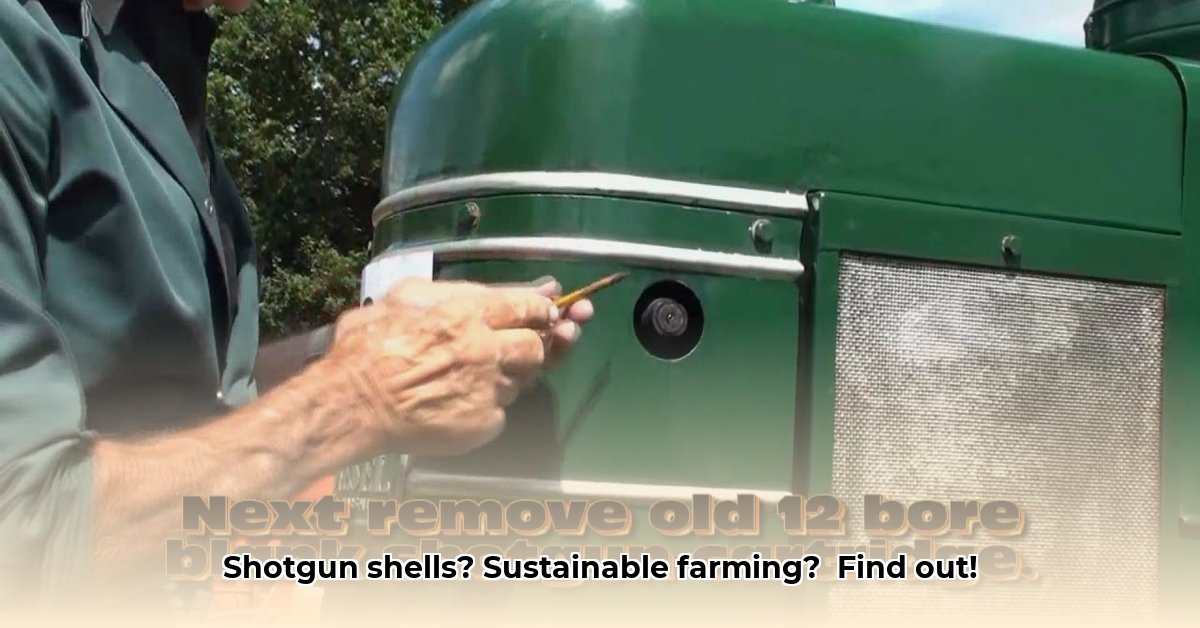
Safety First: Respecting the Power of the Field Marshall
Before we delve into the unique starting mechanisms of the Field Marshall tractor, a robust workhorse of British farms in the 1940s and 50s, let's prioritize safety. We'll be discussing both hand-crank and shotgun-shell starting methods—procedures involving potential hazards. For shotgun shell sourcing, check here.
Hand-crank starting, while seemingly straightforward, poses risks. A slipped crank can cause serious hand or arm injuries. Always maintain a firm grip, use a steady, controlled motion, and anticipate resistance. Unexpected engine starts can also lead to accidents.
Shotgun-shell starting presents even greater risks. This method involves handling firearms, which demand absolute respect and adherence to strict safety protocols. Eye protection and hearing protection are mandatory. Ensure the area is clear of people and obstructions. Always point the firearm in a safe direction, and never point it at yourself or others. If you lack experience with firearms, do not attempt this method. Seek expert guidance and training. The inherent risks are significant.
Hand-Crank Starting: The Muscle-Powered Method
This traditional method, while requiring physical exertion, is significantly safer than the shotgun-shell technique. Follow these steps precisely:
Prime the Engine: Add a few drops of engine oil into the cylinder to lubricate the moving parts during startup. This ensures smoother operation & reduces wear (especially in cold conditions).
Activate the Glow Plug: (If equipped) This preheating element aids combustion, improving starting, particularly in colder temperatures. Allow sufficient time for heating.
Secure the Crank: Carefully attach the hand crank to the engine's crankshaft. Ensure a secure fit before beginning.
Controlled Cranking: Apply steady, firm pressure while cranking. Avoid jerky movements. Multiple rotations may be necessary.
Shotgun Shell Starting: A Blast from the Past (Proceed with Extreme Caution)
This method, while historically relevant, should only be undertaken by experienced individuals with expertise in both tractor mechanics and firearm safety. The risks are substantial and outweigh the benefits in most situations.
Engine Preparation: Prime the engine with oil and activate the glow plug (if applicable), as with the hand-crank method.
Piston Positioning: Accurately position the piston just past top dead center (TDC). This is critical for successful ignition and avoiding potential engine damage. Incorrect placement can lead to severe mechanical issues.
Shell Insertion: Carefully insert a 12-gauge shotgun shell into the designated chamber. This is a specialized component distinct from a standard firearm barrel.
Controlled Firing: In a safe direction and with proper safety gear, carefully fire the shotgun shell. The resulting pressure ignites the fuel-air mixture, starting the engine.
Maintenance and Troubleshooting: Keeping Your Field Marshall Thriving
Regardless of the starting method, diligent maintenance is crucial for optimal tractor performance and longevity. Regular cleaning, lubrication, and component inspections are essential.
Hand Crank Maintenance: Lubricate the crank regularly to ensure smooth operation and prevent seizing.
Shotgun Shell System: Keep the shell chamber clean and free from obstructions. Inspect regularly for any signs of wear or damage.
Troubleshooting will often require access to specific manuals and potentially specialized knowledge. Online communities dedicated to vintage farm equipment can be invaluable sources of information and advice.
Sustainable Farming and the Field Marshall: A Legacy of Resourcefulness
The Field Marshall's unique starting methods reflect a time when resourcefulness and self-sufficiency were paramount. These methods represent a sustainable approach to farming, minimizing reliance on readily available energy sources. Preserving this knowledge and the skills associated with these vintage tractors helps us appreciate the ingenuity and resilience of past farming practices. Moreover, maintaining and repairing these machines using antique or reclaimed parts significantly reduces environmental impact.
Appendix: Further Resources
For more information on the Field Marshall tractor, its restoration, and its unique starting mechanisms, consider exploring online communities dedicated to vintage farm equipment. These forums offer a wealth of knowledge, advice, and support from experienced enthusiasts.
(Note: Specific links to relevant online communities will vary; a search for "Field Marshall tractor forums" or similar will yield many results.)